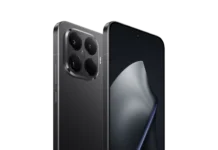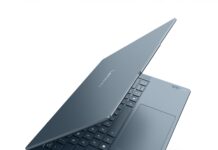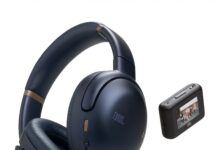Thinness, Done Right
iPhone Air blends featherweight build, all-day battery, and creator-friendly cameras into a travel-ready flagship that never feels precious
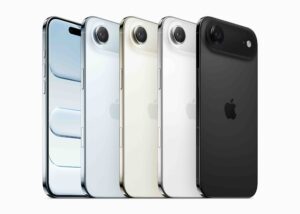
A week in Bangkok with a phone this thin. First, durability. Apple rates the new Ceramic Shield 2 front as up to 3 times more scratch-resistant and the Ceramic Shield back as up to 4 times more crack-resistant. I went case-less and skipped a screen protector on purpose. After daily commutes, street shoots, and a couple of unplanned drops (don’t do this), mine came back without visible damage. Edges are pristine; the screen has no micro-swirls under harsh light. Physics still wins if you yeet it off a balcony, but for real-world knocks, the Air is tougher than it has any right to be at this thickness.
Cameras: as good as the iPhone 17 lens system—because that’s what you’re getting, plus smarter UX. The 48MP Fusion Main is flexible: default 24MP files look clean, and the sensor-crop 2× feature gives you optical-quality reach without a dedicated telephoto lens. Custom Main taps at 28mm and 35mm are a quiet superpower; I found myself bouncing between 26-28-35 for framing without thinking. Portrait mode is better too: subject separation holds up even in messy, low-contrast scenes, and Focus/Depth control after the shot saves the ones where your timing isn’t perfect.
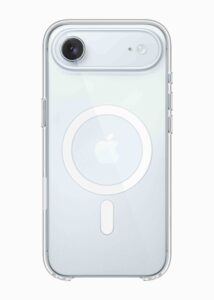
I stress-tested low light in Songwat—antique stores, record bins, old-school digicam stalls, and alleys covered in street art. The Air leaned on Night mode sparingly and kept colour honest. This is where Apple’s “mood” options (Photographic Styles) help: I shot “Warm” for food stalls and “Rich Contrast” for murals. Both kept the vibe without nuking shadow detail. Food at a crowded Michelin-star spot still looked true under mixed lighting—skin tones stayed natural, neon still popped, and greasy highlights didn’t blow out. Ultra-wide is solid for cramped interiors; distortion control has improved, and detail holds better along the edges than I remember on the 15.
Video is where the Air quietly flexes. Stabilisation is automatic and effective enough that I stopped thinking about it. Handheld skyline pans from the Dusit Central Park rooftop garden looked gimbal-clean, and walking shots through narrow Songwat lanes didn’t wobble into jelly. Action mode is still there for chaotic movement, but the baseline stabilisation is so good I rarely toggled it.
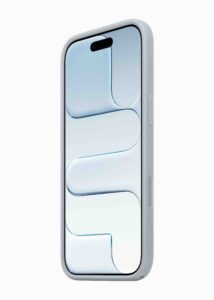
The front camera surprised me too: Centre Stage now works for selfies and front-facing clips, not just video calls. That meant lining up a group shot was as simple as lifting the phone—the frame widened and shifted so everyone fit without herding people around. For vloggers, this is friction removed.
Dual Capture became my favourite toy. Shooting myself narrating while the rear camera recorded the street in front felt like a tiny documentary rig—one file, two angles, no editing gymnastics. I used it at night markets to capture reactions and the scene simultaneously, and it made quick social posts feel way more polished. Battery anxiety? Not really. Apple offers a slim MagSafe Battery Pack for the Air, but I never needed it. With maps, 200+ photos, a stack of 4K clips, and the usual messaging/calls, I ended most days with 20–30% left. For a phone this thin, that’s impressive. If you’re filming continuously, the pack is a nice safety net—but the base endurance is already “whole-day travel” good.

Performance felt “pro” without heat drama. The A19 Pro keeps workloads snappy while the chassis stays cool enough to hand-hold during 4K shooting. Wireless is rock solid: Wi-Fi 7 held speed in hotels with congested networks; 5G handoffs were quick on street level. iOS 26 adds small but meaningful quality-of-life touches—the translucent UI is calmer, Siri’s edge glow feels modern, and system-level intelligence (transcription, cleanup, organisation) quietly saves time. None of it screams “new,” but it all stacks into less friction.
We say: Thin, tough, and quietly powerful, iPhone Air refines everything that matters—camera, battery, screen—into a travel-proof daily driver that’s easy to love and hard to put down.
Rating: 5/5
From S$1,599
www.apple.com
Technical specifications
SIM Dual eSIM (stores eight or more eSIMs; two active); no physical SIM
Chip A19 Pro: 6-core CPU (2 performance + 4 efficiency), 5-core GPU with Neural Accelerators, 16-core Neural Engine, hardware-accelerated ray tracing
Display 6.5-inch Super Retina XDR OLED, 2736×1260 at 460 ppi; Dynamic Island; Always-On; ProMotion up to 120Hz; HDR; True Tone; P3 wide colour; 2,000,000:1 contrast; 1,000 nits typical, 1,600 nits HDR, 3,000 nits outdoor peak; anti-reflective and oleophobic coatings; 1-nit minimum brightness.
Front Camera 18MPCentrer Stage camera
Rear Camera 48MP Fusion system, Video up to 4K Dolby Vision at 24/25/30/60 fps
Capacity 256GB / 512GB / 1TB
Power & Battery Video playback up to 27 hrs (up to 40 hrs with iPhone Air MagSafe Battery), Fast charge to 50% in ~30 min with 20W USB-C adapter or higher; or with 30W adapter via MagSafe
Size & Weight 156.2 × 74.7 × 5.64 mm; 165 g
Splash, Water, Dust Resistance IP68 (up to 6 m for 30 minutes, IEC 60529)




